|
BULB LOG 35 31st -- August 2005

Hedge cutting
My main task for this week is to get the hedges cut. As I have mentioned previously we do not like to cut the hedges too early as they provide a valuable habitat for all the birds who both nest and shelter in them. By now they are very shaggy and you can see that we are not the type of people that like a very formal razor edged hedge but are very happy to enjoy this dishevelled look before the annual cut. I regard this as cropping the hedge because we shred all the cuttings.
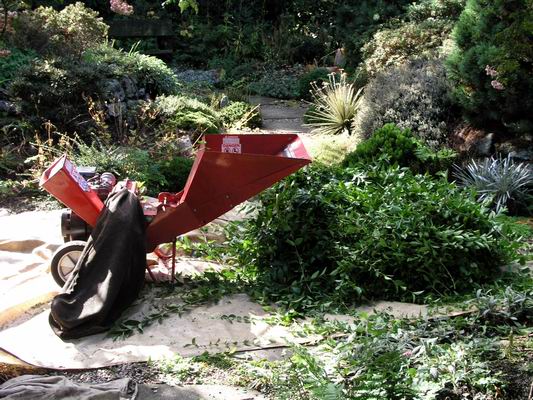
Shredder
All our prunings are shredded through our trusty 5 horse power petrol driven shredder, prior to being composted.
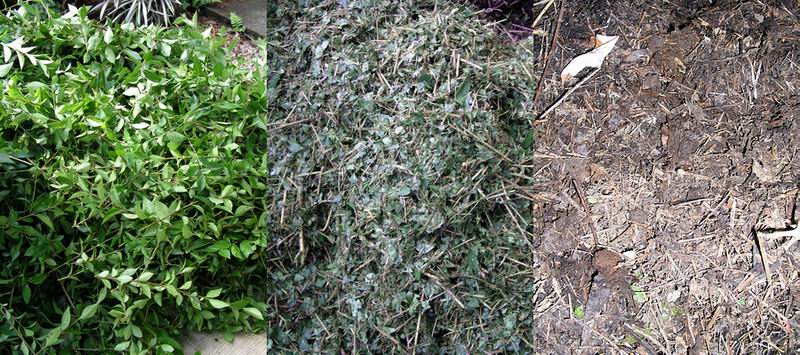
Shreddings
The process is quite quick; after the newly cut material (on the left) is shredded, (centre) it is stacked in a giant heap which heats up very well and within around eight weeks produces a very nice mulching material, (right) ready to be spread over the beds during frost free days in the winter.
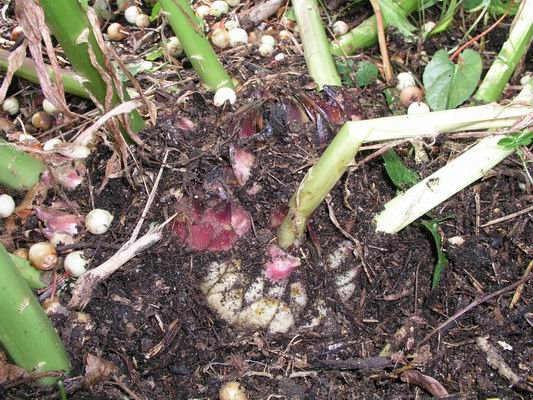
Lily bulbs
While tidying up around the beds I discovered that these Lilium pyrenaicum bulbs are now sitting proud of the surface. New bulbs form above the previous growth and so they need split and replanted every so many years. A generous layer of our mulch helps cover them up but I think that this is the year I will replant this group to a deeper level.
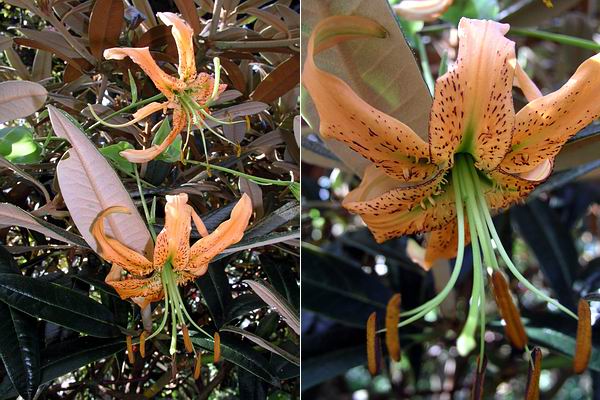
Lilium henryi
A few more lilies are still flowering around the garden. Lilium henryi is always among the last to flower for us with its giant orange petals which are covered in strange hook like growths that lead you down to the green throat. This is a tall plant that would normally need staking in our garden so we grow it close to Rhododendron elegantulum which provides support from its lower branches and the beautiful rhodo leaves make a very nice back drop to admire the lily flowers against.
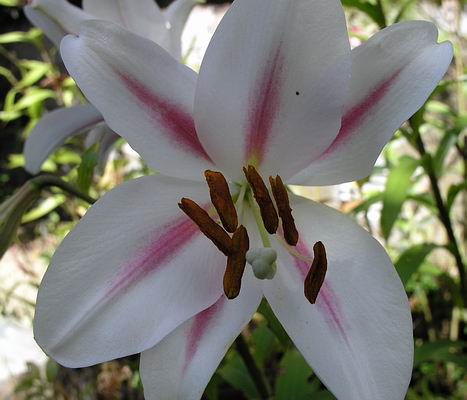
Hybrid lily
Another of the beautiful hybrid lilies that we grow, it has large striking flowers with a delicious scent that fills the air.
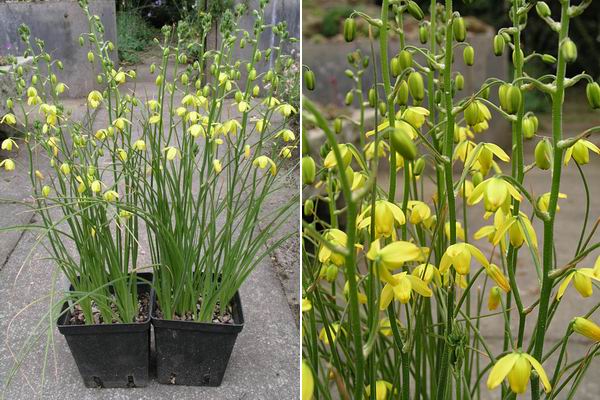
Albuca shawii
Some years ago I was given one bulb of this South African member of the hyacinthaceae to try and see if it would grow in the far north and it is thriving. As long as we keep it completely dry over the winter, introducing water to it in late January, just like we do with the Rhodohypoxis, it has done well. I now have two pots of flowering bulbs and it also produces good fertile seed. As I have a reasonable number now I will try one or two planted out side to see if it can cope with an Aberdeen winter. Provided I choose a site that is not too wet through the winter it may be ok, we have some clumps of Rhodohypoxis that have survived out side for five or six years now. Like Rhodohypoxis it comes form an area of summer rain fall and so it needs plenty of water and feeding during the summer when it is in flower.
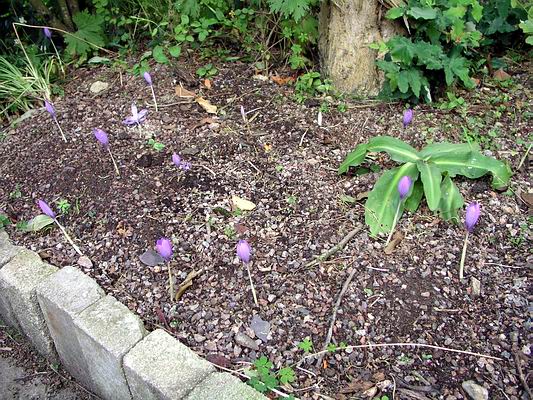
Crocus nudiflorus in bed
This is a bed that we recovered from shrubs and trees which had over grown it too much. By removing the offending branches we have created a much more open area that we can fill with bulbs. We placed bricks along the edge so we could raise the soil level above the tree roots and we added a good 10 to 15 cms of used seed and potting compost. It is now full of all sorts of odds and ends from the bulb potting and bulbs that lost their labels or that self seeded into the sand plunges. This kind of 'dump em in bed 'is a great delight as we are never sure what will appear. Today it is Crocus nudiflorus that is in flower.
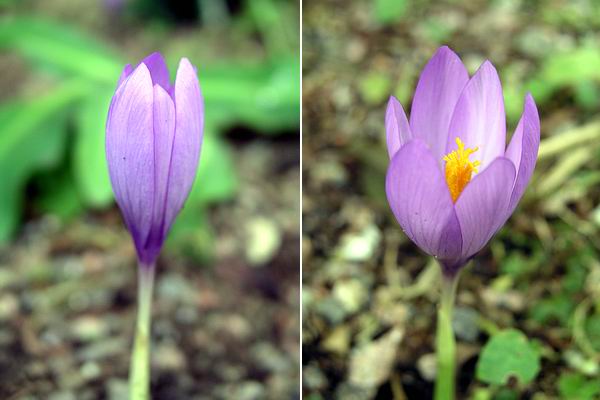
Crocus nudiflorus
Crocus nudiflorus spreads by stolons and it runs through some of our sand plunges which we have just replanted so every time we found a crocus out of its basket it got stuck in this new bed and now we have a scattering of its lovely flowers that will in a few years colonise the spot.
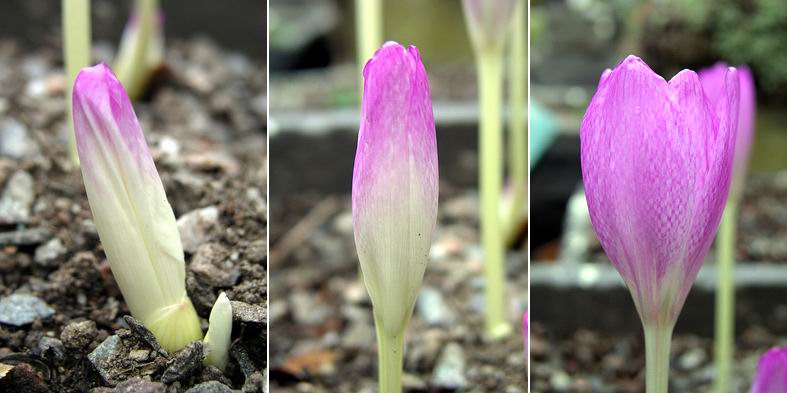
Colchicum tessellated hybrid
The colchicums are starting to bloom as well and I am always fascinated how they colour up as the bud pushes through. You can see the progression of this tessellated hybrid from the left when it first appears with only the tip coloured. The colour gradually washes down the flower as it rises from the earth into the light - then we get the fully coloured tessellated version on the right.
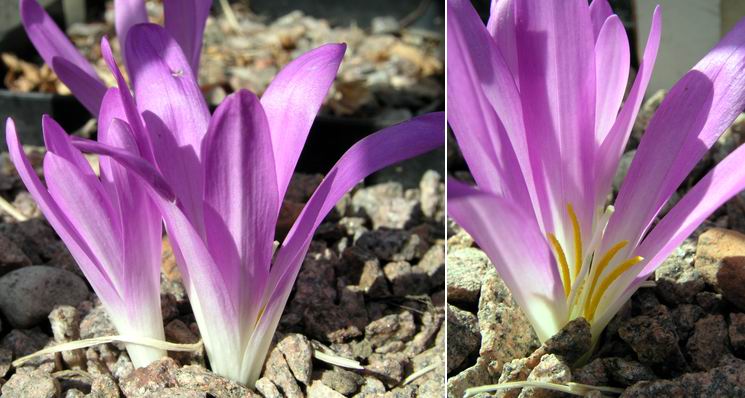
Merendera montana
In the bulb house Merendera montana, or to be up with the current nomenclature, Colchicum montanum, whose flowers lie on the surface with no visible stem or tube.
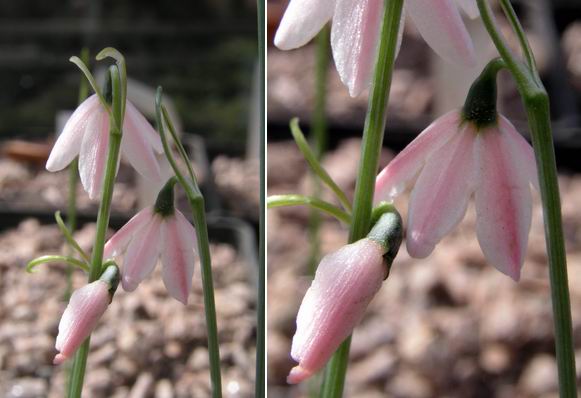
Leucojum roseum
Also we are enjoying the tiny pink fairy cap flowers of Leucojum roseum, easy to miss but such a delight when you do see it and to ensure this we keep it in a pot.
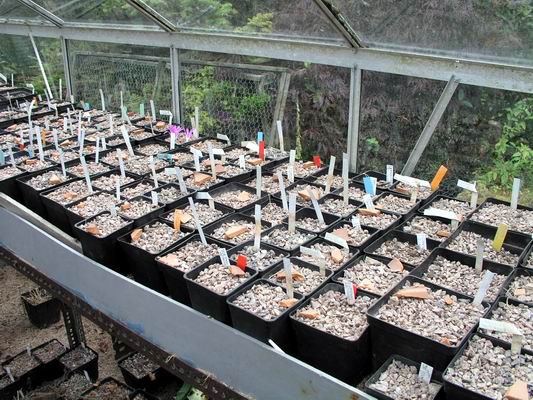
Bulb house
It is approaching the time for the first autumn storm and I will have to soak all the pots of bulbs. Last week I spoke of the 'time clock' that bulbs have. While the article dealt with fritillaries all bulbs have are programmed in similar way. Since I wrote that article nearly two years ago I have decided that the main factor that affects the wake up time for the bulbs is temperature. I am now convinced that it is the falling temperatures of the autumn that stimulate the bulbs to initiate root growth. The rains not only provide the water that encourages the roots to grow but also help to lower the temperature. If this is the case then the best time to apply the first watering to your bulbs will vary slightly depending on the temperatures, so if we have a very warm period in early September then we could hold off the first watering for a week or so. The methods that I use and write about work well for us in Aberdeen and in general they will work for most bulbs any where but you will have to adjust them slightl
y to suit your local conditions -more on this next week after I apply the storm.
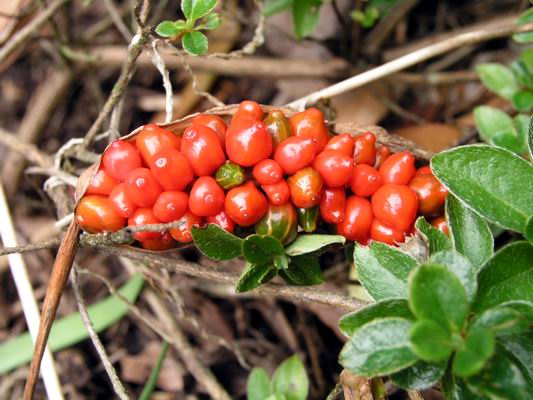
Arisaema berries
Autumn is very much on our minds as the ripening of the Arisaema berries indicates its approach.
^ back to the top ^
|

